*The role of homeownership in creating Black wealth can’t be underestimated. That’s because homeownership plays a pivotal role in building intergenerational wealth and remains the single most effective way for many Americans to build wealth.
Today, homeownership largely remains elusive in the Black community: Black homeownership has only grown by 0.4% over the last decade, according to the National Association of Realtors. To understand why, TD Bank examines the role of homeownership on Black wealth, its history, and the obstacles that have impeded its growth.
In order to understand the present relationship between wealth and homeownership for Black Americans, it is necessary to go back to 1933. That year, the government-sponsored Federal Home Owners Loan Corporation (HOLC) was created as part of the New Deal’s larger efforts to thwart the ever-deepening impacts of the Great Depression. The HOLC was designed to help homeowners avoid foreclosure by providing an architecture for them to refinance their home mortgages. Unfortunately, it became one of the most detrimental policy decisions to impact Black homeownership in American housing history.
The HOLC created uniform national appraisal methods to help people keep their homes. It also created a legal system that considered race as a fundamental factor in deciding the value of a neighborhood and how desirable it was to live there. In short, redlining began.
Neighborhoods with high Black and immigrant populations were shaded red, indicating that they were high risk, so lenders avoided providing loans in those areas. The discriminatory practice prevented Black families from participating in the 1950s and 1960s homeownership boom, because they were systemically denied loans, due not to creditworthiness or whether they could afford the home, but due to their race. If they did receive loans, banks offered them at exorbitantly higher interest rates, equivalent to predatory lending.
The Fair Housing Act (FHA) of 1968 made redlining illegal. However, the economic impact had already taken root and set Black families behind their white counterparts, thus gravely contributing to the lag in wealth for Black communities.
Progress since the Fair Housing Act
The homeownership gap between Black Americans and white Americans is wider today than it was in 1960, when housing discrimination was still legal. The byproducts of redlining coupled with statistics on homeownership and wealth garnered through equity, demonstrate why Black American wealth continues to be elusive. Some data to consider:
- According to the U.S. Census Bureau, as of Q4 2022, the white homeownership rate was 74.5%, 30 points higher than the Black homeownership rate at 44.9%.
- On a national level, a homeowner who purchased a single-family existing home 10 years ago at the median sales price of $169,000 is likely to have gained $225,000 in home equity if the home were sold at the median sales price of $363,100 in Q3 2021, according to the National Association of Realtors.
- Median wealth for white families is $184,000, compared to $23,000 for Black families, according to the Federal Reserve Bank of St. Louis. The difference can be attributed to the significant difference in homeownership rates.
- Based on a study by the Urban Institute, credit score distributions differ between race/ethnicity groups. Black and Hispanic individuals have a median credit score of nearly 630 and 670, respectively, while their white counterparts have a median credit score of 730. That translates to higher costs for credit, including car loans, home loans, and other secured and unsecured consumer products for Black and Hispanic Americans.
What measures can be taken to improve Black homeowners’ wealth?
It is the responsibility of lending institutions committed to increasing homeownership to diversify their mortgage salesforces in order to represent the communities they serve. Consumers typically prefer to bank with people with whom they feel comfortable.
The Equal Credit Opportunity Act (ECOA) and Regulation B permit lenders to extend credit to persons who probably would not otherwise receive it—or would receive it on less favorable terms—and can be based on factors such as race. However until federal authorities clarified this requirement in early 2022, many lenders were reluctant to create these programs to aid buyers.

Such special-purpose credit programs can be tailored toward increasing homeownership opportunities for Black individuals. An SPC program can offer aid in myriad arrangements, such as providing lender credit that does not require repayment, which borrowers can use for closing costs or toward a down payment on their home purchase. This can help address the fact that Black applicants generally have more limited financial resources when buying a home. A greater debt-to-income (DTI) ratio and expanded underwriting requirements, as well as credit parameters that increase accessibility, can also work in otherwise financially questionable applicants’ favor.
When researching a financial institution to apply to for a home loan, potential Black homeowners should find out if specific benefits to increase inclusivity are being provided, including but not limited to:
- Expanded FICO score requirements, DTI flexibility, and loan-to-value qualifications
- Reduced secured card entrance deposit requirements
- Reduced home equity loan minimums
- Whether the bank offers a low-cost, no overdraft fee deposit account
The crucial value of financial education
Many potential homeowners believe they are not creditworthy or able to buy a home because of historic disparities deeply engrained and reinforced—but that’s simply not true. These are myths that must be debunked, like needing to have excellent credit or being able to put 20% down before you can purchase a home.
Therefore, in addition to the aforementioned efforts and programs reliable lending institutions should be providing, financial education, particularly around what’s needed to purchase a home, must also be a priority. An applicant certainly should be in solid financial standing, but there are programs and products, along with government and local programs, that provide down payment assistance, allowing minority consumers to put as little as 3% down on the cost of the home. Educating Black communities can open opportunities for them to pursue homeownership and put them on the path to generating wealth. Financial education must be embedded into an “always-on” strategy focused on building awareness, particularly around homeownership.
It’s been 55 years since the FHA made redlining illegal, but it will take far longer to repair the damage. The best way to accelerate Black homeownership and Black wealth is to provide more equity for these families and to actively be a catalyst for positive change.
This story was produced by TD Bank and reviewed and distributed by Stacker Media.
MORE NEWS ON EURWEB: Can Black Love Survive Without Black Wealth? – Tonetalks on Dash Radio (Video)
We Publish News 24/7. Don’t Miss A Story. Click HERE to SUBSCRIBE to Our Newsletter Now!






